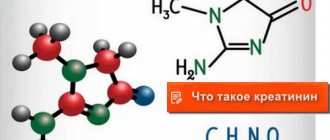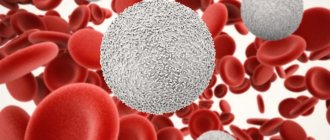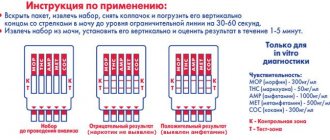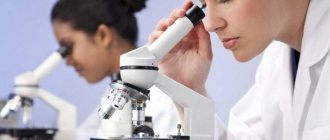Recommendations on the rules for collecting biomaterial (feces)
Very often, when preparing for a stool test, patients ask the following questions:
- How to collect biomaterial?
- How much biomaterial is enough to conduct the study?
- How long can feces be stored? How quickly should stool be delivered to the laboratory?
In this article we tried to answer each of them in detail.
So, in order to correctly collect and deliver biomaterial (feces) to the laboratory, the following conditions must be taken into account:
- The container (container) for collecting feces should be: disposable, sterile, plastic, with a well-closing lid, preferably with a built-in spatula/spoon on the lid.
- Stool collection should be done immediately after natural bowel movement; the use of an enema is prohibited.
- When prescribing stool tests against the background of a special diet, its nature should be indicated when ordering the analysis.
- It is recommended to stop taking medications that affect the functioning of the intestines (laxatives, rectal suppositories), as well as enzymes and preparations containing iron.
- For children, stool collection must be organized under the following conditions:
- use a pot/vessel after disinfecting the vessel;
- Place a clean sheet of paper on the bottom of the pot;
- Collect feces using the built-in spatula/spoon on the lid into a container
- It is unacceptable to store feces in a pot, vessel, or other vessels not intended for collecting feces.
- Feces should not contain any admixture of urine, as well as discharge from the female and male genital organs.
- The amount of stool for laboratory testing is 10-40 g (this is approximately 2 teaspoons or 1 tablespoon). The ideal time to collect stool is in the morning. Unfortunately, in practice it is not always possible to collect biomaterial in the morning. Therefore, delivery of biomaterial to the laboratory is carried out within 2-4 hours after collecting stool, but no later than 10-12 hours after defecation, subject to storage in the refrigerator at +3-6 C. An exception is bacteriological examination of stool - delivery to the laboratory must be carried out in within 2-4 hours after defecation, but not more than 6 hours.
- Hygienic toileting of the external genitalia is not required.
Coprogram
To collect biomaterial, preparation is required for 3-5 days against the background of a special diet containing a certain amount of proteins, fats, and carbohydrates. Compliance with this diet is possible only after consulting a therapist or pediatrician.
Fecal occult blood tests
To collect biomaterial, it is necessary to exclude the following foods from the diet for 2-3 days: meat, fish, green vegetables, tomatoes, iron supplements. Consumption of the above products may give a false positive reaction.
Stool tests for carbohydrates (according to Benedict)
This analysis has the most diagnostic significance for children under 1 year of age. Therefore, it does not require special training.
Examination of stool for intestinal parasites using the high concentration method on PARASEP filters
When scheduling a test, you must obtain a special container from the laboratory in advance.
Storage of biomaterial (stool) at home for no more than 24 hours in the refrigerator t +3-6 C. Long-term storage of biomaterial is ensured by a concentrate, which is in the form of a sprayed substance on the walls of the container, or in the form of a solution.
No special preparation is required for this analysis.
When prescribing for research: differential PCR diagnosis of infectious enterocolitis, Giardia antigen, H. pylori antigen, stool testing for rotavirus, enterovirus, norovirus - conditions are identical to the conditions when prescribing stool testing using the high concentration method on PARASEP filters.
Bacteriological examination of feces (intestinal dysbiosis, opportunistic enterobacteria, pathogens of dysentery and salmonellosis)
No preliminary preparation is required. The biomaterial is delivered to the laboratory within 2-4 hours after stool collection, but no more than 6 hours.
Exception: biomaterial for bacteriological examination of pathogens of dysentery and salmonellosis - feces, smear. Delivery to the laboratory of stool is no more than 6 hours, and smear – 72 hours (since the test tube contains a transport medium with a long shelf life).
The swab test should only be taken by a qualified healthcare professional.
Examination of scrapings for helminths
The scraping is taken by a qualified healthcare professional.
No preliminary preparation is required.
Examination of scrapings for helminths is carried out only in the morning, before defecation. Hygienic toileting of the external genitalia is prohibited .
about the author
- Zemtsova Evgenia Viktorovna
- Biologist
- All publications by the author
Stool analysis
Stool should be collected for examination in the morning. If this is difficult, you can prepare the sample in advance, but no more than 8 hours before submitting the stool to the laboratory. In this case, the sample should be stored in the refrigerator (do not freeze).
| What you should definitely do | What should not be allowed |
1. Thorough toileting of the external genitalia and anus:
2. Pre-urinate. 3. Defecate in a dry, clean container: a vessel or a night vase. 4. Transfer a stool sample of 3-5 cubic meters. cm in a pre-prepared clean, dry container for storage and transportation. 5. If you plan to examine stool for the presence of hidden blood, then exclude meat, fish, green vegetables and tomatoes from the diet for 3 days, and do not brush your teeth, since damaged gums may release a sufficient amount of blood for a false positive result. | 1. Stool examinations should not be carried out earlier than 2 days after an enema, an X-ray examination of the stomach and intestines, or a colonoscopy. 2. You cannot take medications the day before, including:
3. Do not allow urine or water to enter the sample. 4. Conduct stool examination in women during menstruation 5. Using a matchbox as a container for stool is STRICTLY PROHIBITED! Use only a special container or clean, dry container. |
Stool collection technique:
- Only freshly excreted feces obtained naturally on the day of the study are suitable for research;
- Do not touch the inner surface of the container, lid and spoon with your hands, do not wash or rinse it;
- feces must be collected only using a special spoon attached to the lid of a plastic container;
- from the container (vessel), feces are collected into a container using a spoon;
- when collecting feces from small children, it is prohibited to take feces from a diaper, but it is allowed from underwear;
- the container must be filled to no more than 1/3 of its volume;
- feces should not contain urine;
- the container should not be washed or rinsed after collecting biomaterial into it;
- The container with the sample should be delivered to the laboratory within 1 day, before which it must be stored in the refrigerator (at a temperature of + 2 to + 4 °C).
Examination of stool for helminth eggs. Examination of stool for cysts and vegetative forms of protozoa. The release of helminth eggs and protozoan cysts in feces directly depends on the life cycle of the parasites. For this reason, the test results may be negative even if infection is present.
Rules for preparing for research:
- For diagnostic purposes, stool should be collected before taking antiparasitic drugs;
- 3-4 days in advance it is necessary to stop taking laxatives, administering rectal suppositories, oils;
- it is necessary to limit the intake of medications that affect intestinal motility (belladonna, pilocarpine, etc.) and the color of stool (iron, bismuth, barium sulfate);
- material obtained after an enema or after taking radiocontrast substances (barium during X-ray examination) is unsuitable for research.
Features of collecting stool for research:
- feces should be placed in a container immediately after defecation;
- contact of feces with urine is not allowed;
- In infants, the sample is collected immediately after bowel movement from a diaper or clothing (collection from a diaper is not allowed);
- in children starting to walk, a stool sample must be taken from the potty (if the child uses the potty), it is also possible to collect it from a diaper or from a romper;
- for adults and older children, the sample is taken from any clean container;
- Collecting feces from the toilet is not allowed!
Collection technique:
- use gloves when working with the container;
- use a spoon in the lid of the container to place the stool sample into the container;
- collect feces from at least three points of the stool into a container; there should be enough of it so that the level of liquid (preservative) is equal to or slightly above the mark on the container; if there is not enough stool, place all available stool in a container and make sure the sample is in the liquid and not on the sides of the container;
- Screw on the lid tightly and gently shake the container to mix the sample with the preservative;
- if the stool is hard, use a spoon on the lid of the container to stir the stool sample;
- mark the date and time of collection of the biomaterial on the container label and place it in a plastic bag;
- It is allowed to collect stool samples for diarrhea, the presence of blood and mucus in the stool.
Feces for carbohydrates
To test stool for carbohydrates, the material must be collected with the liquid fraction (if any). Feces collected from diapers and other absorbent materials are not suitable for research. It is optimal to collect biomaterial from medical oilcloth. The collected stool is delivered to the medical center as soon as possible. To identify true lactase deficiency, it is necessary to stop taking the lactase enzyme (if the patient is receiving it) 2 days before the test. The diet should contain sufficient amounts of lactose.
Preparation for laboratory testing
Home / Preparation for laboratory research
Article rating: 3.99 (416)
How to take medical tests correctly. The most reliable result of a medical analysis depends both on the level of the laboratory and on the correct preparation of the patients themselves before taking the test. When observing laboratory parameters over time, it is recommended to conduct the study under the same conditions - in the same laboratory, and submit the material for research at the same time.
Main factors influencing the result of the study
- Eating
On the eve of the test, you must refrain from food overload.
A number of tests must be taken strictly on an empty stomach, and at least 10-12 hours must pass between the last meal and blood drawing. Juice, tea, coffee are also food. Before donation, you can only drink still water.
In cases where no special preparation is required, biomaterial can be submitted for examination 2-3 hours after the last meal.
- Taking medications
Taking medications can distort test results. Therefore, if you are taking medications, be sure to notify your attending physician and procedural nurse about this.
- Physiological phases
For a number of hormonal studies, the phase of the menstrual cycle in women is important. Therefore, before the study, it is necessary to clarify the conditions for delivery with the doctor.
- Diagnostic, therapeutic, physiotherapeutic procedures
May temporarily distort the results of some studies. Therefore, you should not take tests immediately after performing these procedures.
- Time of day (circadian rhythms)
Daily rhythms of activity influence fluctuations in many hormonal and biochemical parameters. Reference laboratory values are calculated for standard conditions when blood is taken in the morning.
- Alcohol
Alcohol distorts the results of some indicators. Therefore, before taking tests, you must refrain from drinking alcoholic beverages for 1-2 days.
- Smoking
Smoking causes many acute and chronic changes in blood counts.
To reduce the effect on indicators, it is necessary to refrain from smoking for 1-2 hours before the study.
- Physical and emotional stress
Cause biochemical and hormonal changes. To reduce the negative impact of these factors, it is necessary to rest for 15-20 minutes before taking tests.
Requirements for preparing for urine tests
The material is collected independently at home. Before collection, you must obtain “Collection Instructions” and containers for transporting biomaterial (issued free of charge) in any laboratory procedure room.
To obtain objective test results, you need to prepare for the study: the day before, refrain from physical activity and drinking alcohol; It is not recommended to eat vegetables and fruits that can change the color of urine (beets, etc.), and not to take diuretics. You should not collect urine during menstruation. After cystoscopy, urine analysis can be performed no earlier than 5-7 days later.
Rules for collecting morning urine
You should collect your first morning urine sample. Before collecting urine, it is necessary to thoroughly clean the external genitalia, washing them in the shower with soap so that discharge from them does not get into the urine. After this preparation, it is necessary to collect the middle portion of urine (exclude the first and last portions) into a sterile cup or a previously prepared clean, dry container.
Rules for collecting daily urine
Urine is collected throughout the day. The first morning portion of urine is excluded. All subsequent portions of urine excreted during the day, night and the morning portion of the next day are collected in a container, which is stored in the refrigerator (+2 - +8) during the entire collection time. At the end of the collection, accurately (up to 5 ml) measure the volume of urine excreted per day (diuresis), be sure to mix and immediately pour a small amount (about 10 ml) of urine into another container. It is this container that should be delivered to the laboratory.
Requirements for the preparation and collection of stool
The material is collected independently at home. Before collection, you must obtain “Collection Instructions” and containers for transporting biomaterial (issued free of charge) in any laboratory procedure room.
7 days before the test, stop taking laxatives, vago- and sympathicotropic drugs, kaolin, barium sulfate, bismuth, iron preparations, fat-based rectal suppositories, enzymes and other drugs that affect the processes of digestion and absorption. Two days in advance - eliminate alcohol, stop taking medications that can cause stomach and intestinal bleeding (aspirin, indomethacin, corticosteroids, reserpine, etc.). Avoid enemas the day before. After an X-ray examination of the stomach and intestines, collection of stool for research is indicated no earlier than two days later.
Rules for collecting stool
To collect biomaterial, you can obtain a universal sterile container and instructions for collecting material in any treatment room in the laboratory. Feces for dysbacteriosis are taken exclusively in a universal sterile container, previously obtained in the laboratory treatment room. Feces for PCR studies (Helicobacter, Enterovirus, Rotavirus, Noravirus, Astrovirus) are accepted exclusively in a universal sterile container, previously obtained in the laboratory’s treatment room. Feces are collected through natural defecation into a clean, dry container (pot, vessel) or onto a clean surface, which can be a sheet of paper or polyethylene. When using a pot or vessel, it is first washed well with soap and a sponge, rinsed repeatedly with tap water, and then doused with boiling water and cooled. You cannot collect feces from the toilet. You should avoid mixing urine and genital secretions into your stool. Feces are taken with a spoon or spatula, mainly from the middle portion into a sterile container with a sealed lid in the amount of 1-3 g (1 spoon). If there is mucus and blood in the stool, these areas are the most valuable during the study.
Rules for collecting breast milk
The material is collected independently at home. Before collection, you must obtain “Collection Instructions” and containers for transporting biomaterial (issued free of charge) in any laboratory procedure room.
To collect biomaterial, you can obtain universal sterile containers and instructions for collecting material in any treatment room in the laboratory. Before expressing milk, thoroughly wash your hands and mammary glands with soap, treat the nipples and the nipple area with cotton swabs moistened with 70% alcohol (each gland is treated with a separate swab). Express the first 5-10 ml into a separate container (since this portion of milk is not suitable for research), express the next 4-5 ml into a sterile container, while trying not to touch the edges of the container with your body. Collect milk from each gland in a separate container. The containers are marked, the date and time of collection of the material are indicated, and the indication is: “right mammary gland” or “left mammary gland.”
Sperm collection rules
The material is collected independently at home. Before collection, you must obtain “Collection Instructions” and containers for transporting biomaterial (issued free of charge) in any laboratory procedure room.
To collect biomaterial, you can obtain a universal sterile container and instructions for collecting material in any treatment room in the laboratory. Before collecting material, wash your hands thoroughly with soap and then toilet the external genitalia with soap and water. Dry the glans penis and foreskin with a sterile cloth. Prepare the container, open the container lid so that it can be removed with one hand. Do not touch the inside of the container or lid with your hands. The material is obtained by masturbation and collected in a sterile container. Do not use a condom to collect sperm (substances used in the production of condoms may affect the results).
Rules for collecting tears
The material is collected independently at home. Before collection, you must obtain “Collection Instructions” and containers for transporting biomaterial (issued free of charge) in any laboratory procedure room.
To collect tear secretion, lacrimation is provoked (smell the cut onion). The tear is taken from the corner of the eye with a sterile syringe without a needle. The minimum amount is 0.5 ml.
Rules for sputum collection
The material is collected independently at home. Before collection, you must obtain “Collection Instructions” and containers for transporting biomaterial (issued free of charge) in any laboratory procedure room.
To collect biomaterial, you can obtain a universal sterile container in any laboratory treatment room. The morning sputum released during a coughing attack is subject to examination. Before coughing, it is necessary to brush your teeth and rinse your mouth with boiled water in order to mechanically remove food debris, desquamated epithelium and oral microflora. It is necessary to ensure that saliva and nasopharyngeal mucus do not get into the container (especially with a runny nose!). The secreted sputum is collected in a sterile container. If sputum is poorly separated, the patient is given expectorants the day before.
Requirements for preparing for blood tests
| Coagulation studies |
| Hematological studies |
| Biochemical research |
| Hormonal and immunological studies |
| Infections |
© 2013 - 2021 copyright holder LLC "TIAS LOTUS"
History and philosophy of the company Personal data processing policy For citizens with disabilities Preparation for analyzes Phone numbers of higher-level organizations State guarantee program Payment methods Help for the Federal Tax Service Contacts Our partners
Gemohelp mobile application
8-800-100-08-05
Call if you have any questions
By using the website www.gemohelp.ru, you agree to the use of cookies
I confirm
More details
Select city:
- Arzamas
- Balakhna
- Bogorodsk
- Bor
- Vacha
- Vyksa
- Dzerzhinsk
- Trans-Volga region
- Kstovo
- Kulebaki
- Lukoyanov
- Lyskovo
- Moore
- Navashino
- Nizhny Novgorod
- Pavlovo
- Sarov
- Semenov
- Sosnovskoe
- Cheboksary
- Chkalovsk
Confirm
Dysbacteriosis
Material (feces) for intestinal dysbiosis is collected in a sterile container before the start of treatment with antibacterial and chemotherapeutic drugs, as well as drugs containing flora, or no earlier than 2-3 weeks after its completion. 3-4 days before the study, you should stop taking laxatives and stop administering rectal suppositories. Stool obtained after an enema is not suitable. You should urinate in the toilet first to avoid urine getting into the collected material. For research, freshly excreted feces are collected in a dry, clean container, then a small amount is taken from the middle part of the fecal mass with a special spoon mounted in the lid of a universal plastic container. As soon as possible after collection, the feces are delivered to the medical center.
How to collect feces for coprogram (scatological examination) in children
- The feces are collected in a sterile container with a screw cap and a spoon, which must be obtained in advance from the Sanare medical center for free or purchased at a pharmacy.
- The container is filled to no more than 1/3 of its volume.
- The container must clearly indicate the child's last name, initials, date of birth, and the date and time the material was collected.
- It is optimal to deliver the material to the medical center on the day of collection. During collection, impurities of urine and genital secretions are undesirable.
- Before shipment, the material must be stored in the refrigerator at +4...+8°C, the maximum permissible storage time for feces before scatological examination is 8-12 hours.
Unless the doctor has prescribed otherwise, the study is not recommended while taking medications that affect the processes of digestion and absorption (laxatives, enzymes, iron supplements, rectal suppositories). Testing after a cleansing enema is also not recommended. After an X-ray examination of the stomach and intestines, stool analysis is indicated no earlier than two days later.
Important!
When examining stool for occult blood, meat, fish, tomatoes, all types of green vegetables, and iron supplements should be excluded from the diet for 3 days.









